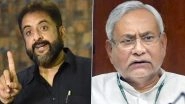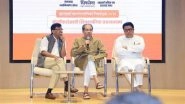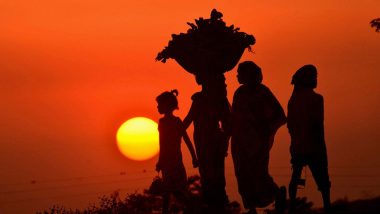India, similar to other sovereign states of the third world, is a young nation which has marked only seven decades of existence post-independence. On the country's 72nd Independence Day, we take a look back at its growth story in numbers.
India attained Independence on August 15, 1947. After nearly 200 years of British imperial rule, the country broke away from the colonial shackles. Although self-determination, in the political realm, was achieved 72 years ago, questions loom on whether the benefits of economic and social advancement have been reaped by the last person in the last queue. (Also Read: The women leaders of Independent India)
From Then to Now - A Statistical Comparison
Agricultural Growth
- In the decade before independence (1938-47), India's agricultural growth rate averaged at around 1 per cent.
- In the 50-year period post-independence, agriculture in India grew at an average of 2.6 per cent.
- In 2017-18, the agriculture growth rate was estimated as 2.1 per cent by the Central Statistics Office.
- In 1947, 50 per cent of India's national income was contributed by agriculture and allies activities. The share of the population dependent on agriculture for their livelihood was 72 percent at the time.
- In 2017-18, agriculture contributed to 16 per cent of the national income. However, 61 per cent of the population is employed under agricultural and allied activities.
GDP Surge
- From 1947-64, India's gross domestic product grew at an average rate of 1.68 per cent per annum. In the subsequent years, negative growth rate was recorded due to the war with China.
- In 1950, when the first set of official data was compiled, the GDP of India valued at Rs 93.7 billion.
- By 2006-07, the GDP valued at Rs 410006.4 billion, with the growth rate peaking to 9.57 per cent -- the closest India ever reached to the double-digit mark.
- In 2017-18, the annual GDP growth rate was pegged at 6.5 per cent.
Employment
- Data for the period between 1947 to 1951 was not compiled as the country was ruled by an interim government. In 1952, the first Planning Commission authorised the National Sample Survey Office to release an estimate of the unemployed population of the nation.
- The first major estimate came in 1959, when 68.2 lakh citizens had registered themselves as unemployed at the employment exchange offices.
- The unemployment rate, therefore, in 1959 was 3.1 per cent as per the official records. The unofficial numbers, claim analysts, could be larger as the data does not take into account those unemployed citizens who did not register with the employment exchange offices.
- In comparison, the number of unemployed people in 2017 who had registered with the employment exchange was 1.77 crores. The unemployment rate was 3.4 per cent.
Population Boom
- As per the 1951 census, India's population was 361,088,090 (36.1 crore). The number has grown to 1,210,193,422 (1.21 crore) in 2011.
- In 1951, 29.8 crore, or nearly 81 per cent of the population resided in villages. The urban population count was 6.2 crore.
- As per the 2011 census, the rural population has grown by three times to 83.3 crore.
- The urban population, on the other hand, has bludgeoned by six times in the fifty-year period. In 2011, it was recorded as 37.7 crore, which is nearly 31.6 per cent of the population.
Literacy & Poverty Line
- According to the 1951 census, 18.33 per cent of the population was literate. The gap in male-female literacy rate was 12.3 per cent, which reflects the lack of education attained by the girl child.
- By 2011, 74.04 per cent of the population was literate. The gap in male-female literacy rate was found to be 16.68 per cent.
- In 1947, 46 per cent of the nation was below the poverty line (BPL), as per the data sourced from the Planning Commission.
- By 2017, India was able to decrease the BPL rate to 12.4 per cent. By 2022, the government envisages to eradicate poverty from the nation.
In the last seven decades, India has remained a welfare state for the most-part, with the social security and subsidy schemes being part of the government's agenda to this date. A shift, however, has been gradually seen as the nation has moved on from the Nehruvian socialism and nationalisation of Indira Gandhi to the liberalisation and globalisation adopted under the PV Narasimha Rao regime. The current dispensation, which is the first non-Congress 'single-majority' government, has remained committed to the free-market principles.
(The above story first appeared on LatestLY on Aug 10, 2018 09:22 AM IST. For more news and updates on politics, world, sports, entertainment and lifestyle, log on to our website latestly.com).













 Quickly
Quickly


